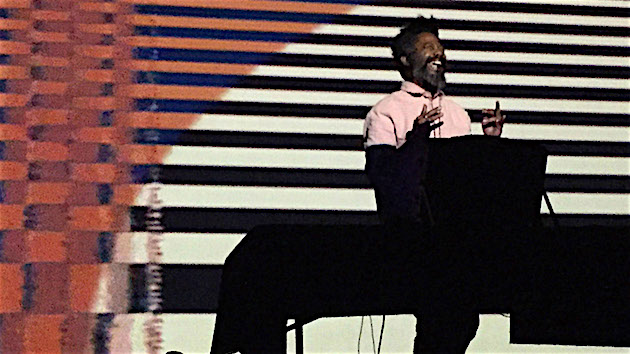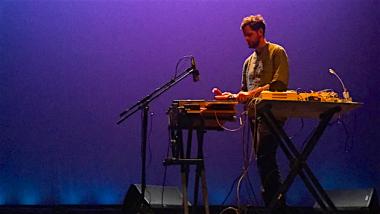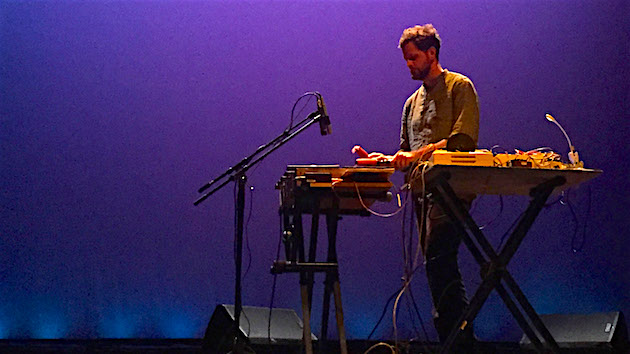
San Francisco Electronic Music Festival might just be the city’s most spontaneous new music event. It’s a nurturing environment for artists to debut material, but even if they perform older works, the nature of electronic media means that things never unfold in exactly the same way.
In my pre-concert research, I’ve often listened to an artist’s latest release — only to hear something aesthetically opposite in the same artist’s live set. And the SFEMF sets (at the Brava Theater) are generous, at 30 to 45 minutes per artist. On one hand, it’s exciting to see what musicians can do after they settle into their sound. On the other hand, improvisation is sometimes less than magical, at least to my ears on Friday and Saturday.
One strong point of view came from New York-based composer Vanessa Rossetto, who created a vivid audiovisual work on wartime Europe. She’s also a painter, and it showed: the superimposed graffiti, stop-motion video, and other distortions of the grainy archival footage were all meticulous — and, paradoxically, made the historic imagery feel immediate and urgent. In Rossetto’s work, the 20th century isn’t a past archived into a neat chronicle; it’s messy and confusing, with snippets of imagery and flashes of memory but never a complete picture. The music, static like in-flight background noise, played an admittedly supporting role, but it hardly mattered.
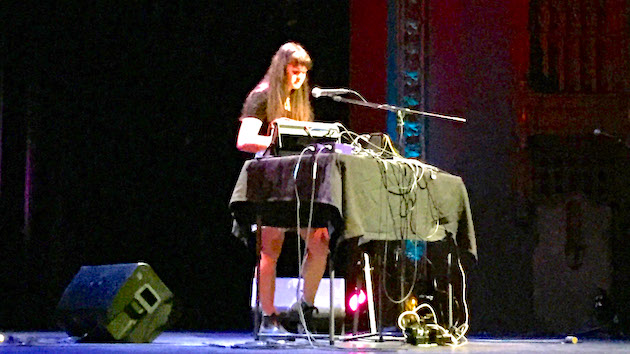
Sally Decker, who studies at Mills, played an electro-acoustic set that felt both performative and reflective. Intoning a doleful text, her narrative presence was often compelling, but clumsy and stop-start electronics made aspects of the performance unintentionally goofy. It was a bit like seeing all the shots in a photoshoot — some good, others rough, but even the worst frames endearing in some way.
After all, how much editing can these musicians do in real time? Even if they’ve performed the sets before, processes can be unpredictable — and composers who perform their own work don’t get feedback as do composers who have to send their music off to be played. Alone onstage, anyhow, they’re not getting any cues to move the music in another direction. Some of these reasons might have contributed to sets that felt to me long and self-indulgent, and I would have liked to read program notes for all the works, but especially the ones I didn’t particularly like.
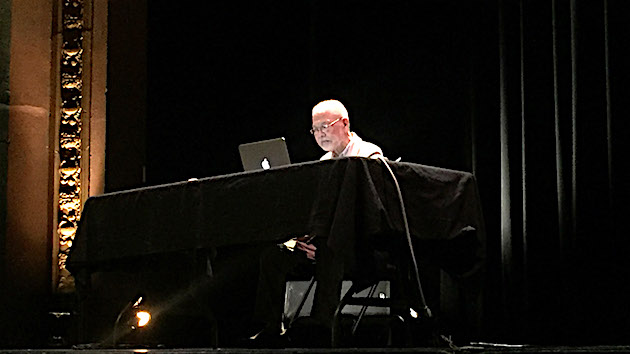
Yasunao Tone’s set was, perhaps, a celebration of maximalism, abundance, and complexity. A performance by Tone could go in practically any direction (his long career has encompassed many genres) but Saturday’s set was all noise, highly saturated and fast-moving from start to finish. Quirky and playful, diverse in range, his disorienting music exploded with possibilities.
On the other hand, the set by Collin McKelvey (a recent ex-resident of the Bay Area) had a clear arc. Initially, the music’s static background put into relief distinctive screeches, forming a complete system. The pitches intensified until wiped out by some cataclysmic event; then, slowly, a new system rebuilt in its place. During this last section in particular, listening was sometimes like meditation, and sometimes like good suffering, a challenge to overcome in order to be a better person.
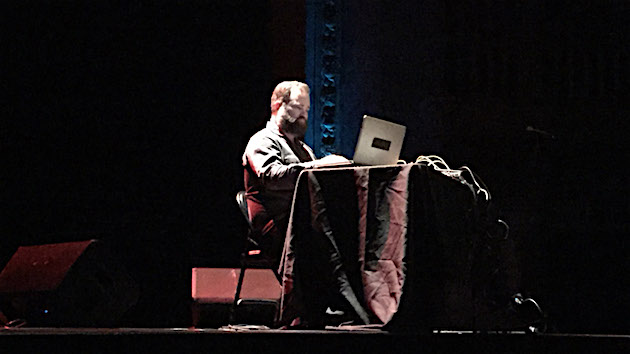
Two sets stood out for their combination of electronic with amplified acoustic sounds. On Saturday, Glochids — the Oakland-based artist James Roemer — created an impossibly rich soundscape, like a composite photograph combining the best aspects of multiple images into one frame. Squirrely whistles cross-faded into rhythmic grooves, live metallophone looping and other amplified objects creating an evocative sound environment befitting the artist’s name (glochids are the prickles on cacti).
My highlight was the set by Robert Aiki Aubrey Lowe, whose characteristic sustained vocal style I’d come to know from his mid-2000’s music released under the moniker Lichens. On Friday, I also found Lowe to be a charismatic performer. In distinct but related segments, motifs — pulsing tones, churning perpetual motions, and dreamy drones — came and went, developing but never overstaying their welcome. Seamless transitions and larger-than-life projections of sacred-looking geometry heightened the trance-like state. I didn’t worry about the piece as it went, only enjoyed.
